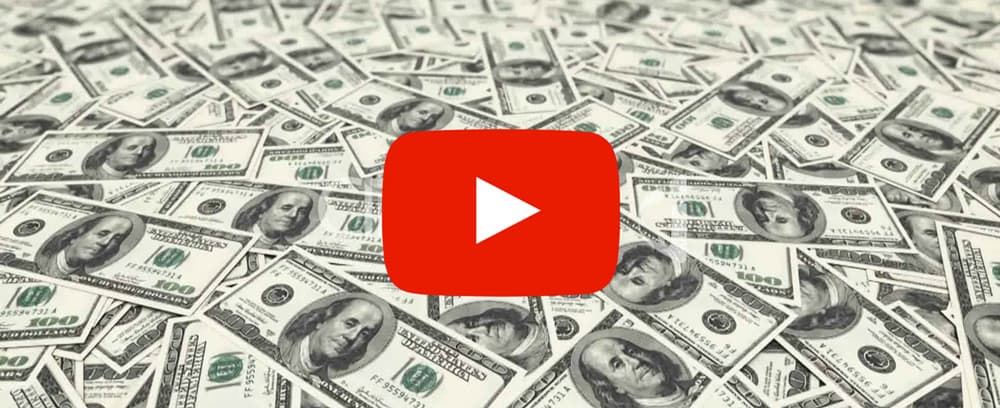
Understanding YouTube's 2025 Monetization Policy Changes
summary
The newest changes to YouTube's monetization policies, introduced in 2025, represent a pivotal shift in the platform's approach to supporting content creators and maintaining a secure environment for advertisers and viewers. YouTube, as one of the leading online video platforms, continuously evolves its policies to address the dynamic nature of digital content creation and advertising. These changes have profound implications for the YouTube Partner Program (YPP), impacting how creators qualify for monetization and interact with their audiences through diverse income-generating opportunities.[1][2]
One of the most notable updates in 2025 is the adjustment of YPP eligibility criteria, designed to accommodate a wider range of content creators, particularly those specializing in short-form content like Shorts.[3] By lowering the thresholds for joining the YPP, YouTube aims to create a more inclusive environment that encourages diverse voices and creative expression on the platform.[3] Additionally, the introduction of a "monetization lite" version allows creators to leverage monetization features such as selling product links, albeit with limited benefits compared to full monetization.[4]
Furthermore, the updates to YouTube's advertiser-friendly content guidelines have significant implications for content creators and advertisers alike. The renaming of the "Harmful or dangerous acts" policy to "Harmful acts and unreliable content" underscores YouTube's commitment to curbing misinformation and protecting the integrity of electoral and democratic processes.[5][6] Content making demonstrably false claims is now explicitly ineligible for ad revenue, reflecting the platform's efforts to maintain a trustworthy ecosystem for users and advertisers.[5][6]
These policy changes have sparked varied reactions from the YouTube community and the advertising industry. While creators appreciate the expanded opportunities for monetization, they must remain vigilant to comply with evolving guidelines to sustain their revenue streams.[7] Advertisers, on the other hand, are adjusting their strategies to align with YouTube's updated standards, ensuring their campaigns resonate effectively with the platform's diverse audience.[8] As YouTube continues to refine its monetization framework, these changes highlight the platform's dedication to fostering a balanced and safe environment for all stakeholders.[1][2]
History of Monetization Policies
YouTube's monetization policies have evolved significantly over the years to adapt to the changing landscape of content creation and to ensure the platform remains safe for creators, viewers, and advertisers alike[1][2]. The monetization policy framework is crucial as it dictates the eligibility criteria and guidelines that content creators must adhere to in order to earn revenue through the platform[1].
One of the recent significant changes to YouTube's monetization policies occurred in 2025, introducing substantial updates that affect the YouTube Partner Program (YPP)[3][4]. Starting from June 5th, YouTube modified the reapplication process for joining the YPP, providing a more structured timeline for creators whose applications were rejected. Applicants now have a 21-day window to appeal decisions, allowing for a more transparent and predictable process[3].
Additionally, updates to the advertiser-friendly content guidelines in October 2024 introduced a rebranding of the "Harmful or dangerous acts" policy to "Harmful acts and unreliable content"[5][6]. This change included clarifications that content containing demonstrably false claims, which could undermine trust in electoral or democratic processes, would not be eligible for ad revenue[5][6]. These updates reflect YouTube's ongoing commitment to maintaining a safe and trustworthy environment on the platform[2].
As these policies continue to evolve, it is essential for content creators to stay informed about such changes to adapt their content strategies and ensure compliance with YouTube's guidelines[4][7].
Recent Changes in Monetization Policies
In 2025, YouTube implemented significant updates to its monetization policies, affecting creators worldwide. One of the major changes is the adjustment of the YouTube Partner Program (YPP) eligibility criteria and the introduction of a "monetization lite" version. This version allows creators to use features such as selling product links on their videos without gaining full monetization benefits[8].
Starting June 4, 2023, the reapplication process for YPP underwent modifications. If an application is rejected, creators have a 21-day window to appeal the decision. If the appeal fails, creators must wait 30 days for the first reapplication and 90 days for subsequent attempts[3][9][10]. Moreover, YouTube has introduced new terms that creators need to accept by July 10, 2023, to continue monetizing their content[11][12].
The platform also updated its advertiser-friendly content guidelines. The "Harmful or dangerous acts" policy was renamed to "Harmful acts and unreliable content," including content that makes demonstrably false claims potentially undermining electoral or democratic processes[5][6]. Such content is ineligible for ad revenue.
Additionally, YouTube is enhancing its integration with online shopping, offering creators new ways to monetize their content beyond traditional ad revenue[11]. These changes aim to adapt to the evolving digital landscape, where competition for user attention is increasing due to features like streaming and Shorts[13].
Creators must stay informed about these updates to navigate the evolving monetization landscape successfully. These changes will initially be applied in countries including the U.S., the U.K., Canada, Taiwan, and South Korea, with plans for a broader rollout to other regions[14].
Key Features of the New Monetization Policies
In 2024, YouTube introduced significant changes to its monetization policies, impacting how content creators can earn revenue on the platform. These updates have introduced new eligibility criteria and expanded opportunities for creators to engage with their audiences and generate income.
Eligibility and Application Process
Starting in early 2025, YouTube has rolled out updated eligibility criteria for the YouTube Partner Program (YPP), particularly focusing on Shorts creators. Creators can now apply to YPP by reaching a threshold of 1,000 subscribers and 10 million Shorts views over a 90-day period[15]. For those who apply and are initially rejected, the re-application process has been revised; creators will have 21 days to appeal the decision, effective June 5, 2023[9].
Updated Advertiser-Friendly Guidelines
YouTube has also updated its advertiser-friendly content guidelines. Notably, the "Harmful or dangerous acts" policy has been renamed to "Harmful acts and unreliable content" as of October 2024. This update emphasizes that content containing demonstrably false claims that could undermine participation or trust in electoral or democratic processes is not eligible for ad revenue[5][6]. These updates are crucial for creators to understand in order to maintain monetization on their channels.
Monetization Opportunities
The new policies offer creators various ways to earn money, including through traditional ads on long-form content and Fan Funding features[15]. YouTube has expanded access to fan funding options like channel memberships, allowing creators to connect with viewers and earn income earlier in their creator journey[16]. To activate these features, creators must link their channels to a Google Payments Merchant account[17].
Additionally, YouTube has introduced a "monetization lite" version that enables creators to utilize features like selling product links on their videos, although it does not provide all the benefits of full monetization[8].
YouTube Shopping Affiliate Program
The YouTube Shopping Affiliate Program has been enhanced to help creators better engage with their audience and share products they love, which can also generate revenue. This program allows creators to authentically market products through shoppable video collections, which can be more impactful than traditional product placements[18][19]. This initiative is part of YouTube's effort to integrate shopping content into creators' strategies organically.
These policy updates reflect YouTube's ongoing commitment to refining its monetization options and maintaining a platform that balances creator success with advertiser needs. It is crucial for creators to stay informed about these changes to optimize their monetization potential and comply with YouTube's guidelines[4].
Impact on Content Creators
The newest changes to YouTube's monetization policies in 2024 have introduced significant shifts for content creators on the platform. These updates reflect YouTube's ongoing efforts to empower creators by providing new avenues for monetization and adjusting eligibility criteria. The introduction of lower thresholds for joining the YouTube Partner Program (YPP) now enables smaller creators to access monetization features, thereby fostering a more inclusive environment for diverse creators to earn revenue[20][21].
YouTube's expansion of the YPP to include Shorts creators, along with ad revenue sharing for Shorts, marks a pivotal development in broadening the potential earnings for creators focused on short-form content[22]. This not only diversifies revenue streams but also helps creators reduce their reliance on traditional ad revenue, which can be unpredictable. Additionally, fan-driven income tools, such as Channel Memberships and Super Chat, are now accessible earlier, allowing creators to build stronger connections with their audience and sustain their careers more effectively[23][22].
The introduction of the YouTube Shopping Affiliate Program offers creators a new way to engage with their audience by authentically marketing products through shoppable video collections[18][19]. This feature enables creators to showcase products they genuinely use, thereby fostering trust and authenticity with their viewers, which can be more impactful than traditional product placement strategies[19].
However, with these opportunities come challenges, as creators must adapt to the evolving policies and guidelines to maintain their monetization status. Violation of these guidelines, such as producing content that violates the advertiser-friendly content standards, may lead to the suspension or permanent disabling of monetization on their channels[24][6]. As a result, it is crucial for creators to stay informed about these updates to continue succeeding on the platform[4].
The changes in the application process for the YPP also imply that creators who are initially rejected must wait longer to re-apply, potentially impacting their ability to quickly capitalize on monetization opportunities[25]. Despite these hurdles, the overall updates are designed to streamline the process and lessen the administrative burden on YouTube's review team, allowing for a more efficient system for creators seeking monetization[26].
Impact on Advertisers
The recent updates to YouTube's monetization policies have significant implications for advertisers. One of the critical changes in October 2024 was the renaming of the "Harmful or dangerous acts" policy to "Harmful acts and unreliable content" [5][6]. This revision includes a clarification that content making demonstrably false claims that could undermine participation or trust in electoral or democratic processes is not eligible for ad revenue [5][6]. Advertisers must ensure their content aligns with these guidelines to avoid restriction or suspension of their ad assets [27].
The updates emphasize the importance of content reliability and truthfulness, which can directly affect the type of content advertisers associate with. Advertisers are urged to thoroughly review their content to ensure compliance with YouTube's revised policies to maintain the integrity and reach of their advertising campaigns. Non-compliance could lead to significant disruptions in advertising efforts and potential financial implications due to the loss of ad revenue opportunities [27].
In the competitive advertising landscape, maintaining compliance is crucial for maximizing exposure on YouTube. The platform's guidelines are designed to protect its community while ensuring advertisers can reach their audiences effectively and responsibly. As a result, advertisers must remain vigilant and adapt their strategies to adhere to these evolving policies [5][6].
Community and Industry Reactions
The recent changes to YouTube's monetization policies have elicited varied reactions from both content creators and advertisers. Among creators, there is a sense of urgency to stay informed about these updates in order to maintain and potentially enhance their revenue streams. This is especially crucial with the updated guidelines around advertiser-friendly content, which now include the renaming of the "Harmful or dangerous acts" policy to "Harmful acts and unreliable content" and the clarification that content making demonstrably false claims that could undermine trust in electoral or democratic processes does not qualify for ad revenue[5][6][4].
Creators, particularly those part of the YouTube Partner Program, have welcomed the program's expansion, which allows more creators earlier access to monetization features like channel memberships[16]. This has been seen as a positive move, offering smaller creators additional opportunities to monetize their content and engage with their audience more effectively[20].
On the industry side, advertisers have adjusted their strategies to comply with YouTube's updated advertising policies. As of late 2024, significant investments were noted from the retail and media industries, each spending 178 million U.S. dollars in advertising on the platform[28]. Advertisers must ensure their ad assets meet the required standards to avoid disapproval or suspension, with the option to appeal if they disagree with policy decisions[27]. This reflects a heightened awareness and adaptation to the evolving landscape of YouTube's monetization and advertising environment.
Legal and Regulatory Considerations
YouTube's monetization policies are closely aligned with legal and regulatory requirements to ensure compliance across different regions. Ads on the platform must adhere to applicable local laws and regulations, which can vary significantly by region[29]. This includes strict compliance with rules pertaining to privacy, data protection, and advertising standards. Moreover, YouTube emphasizes transparency in advertising practices. Content creators are required to clearly disclose when their content is sponsored or includes paid promotions, maintaining a high level of transparency and trust with viewers[29].
The platform's policies are also structured to protect intellectual property rights through its rights management system, which identifies the owners and administrators of intellectual property. This system helps enforce rights by employing automated tools like Content ID, which scans and identifies unauthorized use of content, ensuring creators' works are protected[30]. These measures reflect YouTube's commitment to creating a safe environment for creators, viewers, and advertisers, thereby fostering a reliable digital ecosystem[2].
Comparisons with Other Platforms
In recent years, YouTube's monetization policies have undergone significant changes to adapt to industry trends and regulatory requirements, making it essential to compare these changes with monetization policies on other platforms. The most recent updates in 2024 have introduced more flexible criteria for joining the YouTube Partner Programme (YPP), lowering the threshold to 500 subscribers and reducing other requirements, which is a notable shift aimed at empowering a broader range of content creators[31]. This change positions YouTube more competitively compared to platforms like Instagram and TikTok, where monetization options are typically reserved for creators with larger followings or more established engagement metrics.
While platforms such as Instagram and TikTok have introduced features like shopping integrations and branded content tools, YouTube's emphasis on authenticity through features like shoppable video collections offers a unique proposition. YouTube encourages creators to market products authentically, which can foster greater trust with their audiences[19]. This focus on authentic product promotion distinguishes YouTube's approach from other platforms that may prioritize direct advertising partnerships over content-driven product integration.
Additionally, YouTube's commitment to maintaining a safe environment for creators, viewers, and advertisers through its evolving policies and guidelines is a shared priority with other platforms[2]. However, YouTube's extensive guidelines around transparency in advertising, including mandatory disclosures for sponsored content, are more stringent compared to some competitors, ensuring compliance with regional advertising standards and enhancing user trust[29].
Future Outlook
As YouTube continues to evolve, the platform's monetization policies are expected to undergo further transformations to adapt to the dynamic digital landscape. The updates to the Advertiser-friendly content guidelines in 2024, such as renaming the "Harmful or dangerous acts" policy to "Harmful acts and unreliable content," demonstrate YouTube's commitment to maintaining a platform that is both safe for users and viable for advertisers[5]. These changes, particularly those concerning content that could undermine trust in democratic processes, reflect a broader trend towards ensuring that the platform is free from misinformation[5].
The impact of these changes will be significant for content creators, necessitating a keen awareness of the evolving guidelines to maintain monetization capabilities[4]. It is crucial for creators of all sizes to stay informed about these policy shifts to navigate the platform successfully[11]. YouTube's approach underscores the importance of aligning content with advertiser expectations and adhering to community standards[4].
Looking forward, creators can anticipate that YouTube will continue refining its policies to balance the needs of advertisers, content creators, and viewers alike. As such, the platform's monetization strategies will likely keep evolving in response to both internal objectives and external pressures from societal and technological advancements[32][7].


